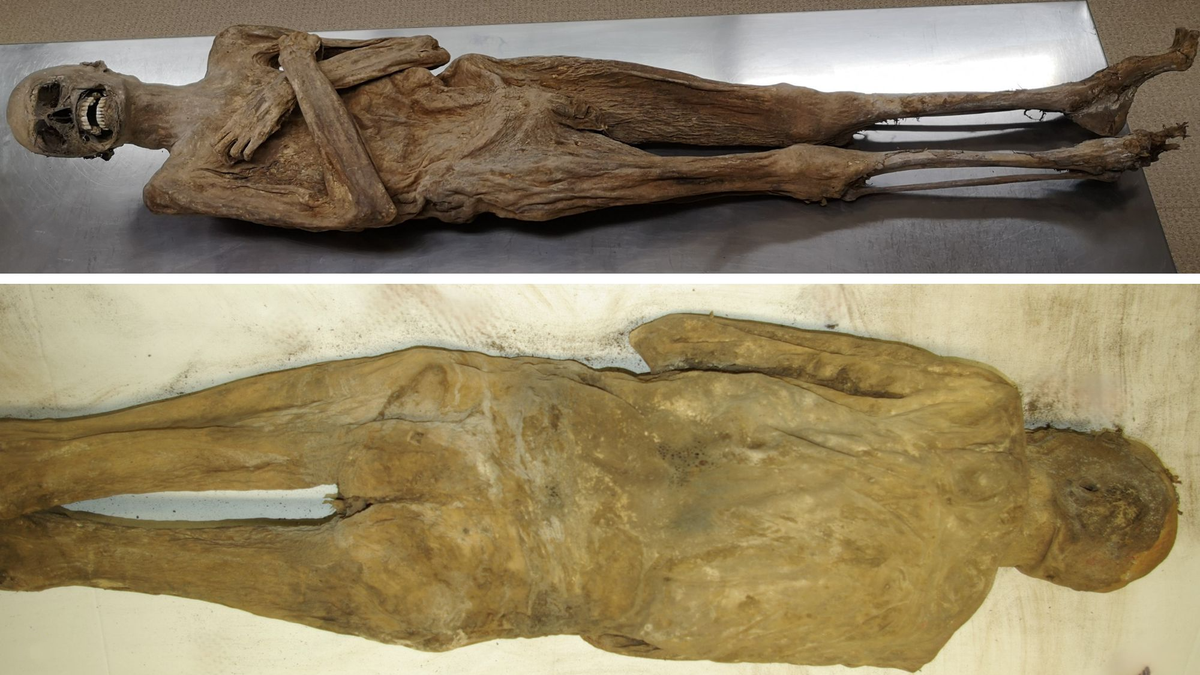Now Reading: Researchers Unveil Unusual Mummification Practices of 18th-Century Monk
-
01
Researchers Unveil Unusual Mummification Practices of 18th-Century Monk
Researchers Unveil Unusual Mummification Practices of 18th-Century Monk

Quick Summary:
- Researchers analyzed the mummified body of Franz Xaver Sidler von Rosenegg, an Austrian parish vicar who died in 1746 at the age of 37.
- The mummy, located in a church crypt near the Danube River, was preserved with a unique embalming method involving wood chips, fabric, twigs, and zinc chloride inserted through his rectum for internal drying.
- Historical records identified Sidler as “the air-dried chaplain,” and his remains have been associated with alleged healing miracles.
- A CT scan revealed calcifications and cysts in Sidler’s lungs indicative of chronic tuberculosis, believed to be his likely cause of death due to acute pulmonary hemorrhage. Poisoning was ruled out after toxicology tests.
- Materials found inside the mummy included spruce/fir wood chips, silk fabrics with floral patterns, hemp swatches interspersed with mud and buttons from clothing.A previously assumed poison capsule turned out to be a glass bead from a rosary.
- Researchers proposed that Sidler may have been embalmed for potential transport or prolonged display post-mortem-though final reasons remain unclear.
Images:
- Mummified body front/back view (Image credit: Andreas Nerlich).
- historical fabric extracted from abdomen (Image credit: Andreas Nerlich).
Indian Opinion Analysis:
The revelation sheds light on historical mummification techniques largely absent from documented practices while also emphasizing advancements in scientific analyses such as CT scans and radiocarbon dating for unlocking mysteries surrounding centuries-old remains. Though centered on Austria’s history and Franz Xaver Sidler’s death due to tuberculosis complications rather than poisoning as once theorized-this case highlights interconnected areas like embalming innovation during colonial religious contexts.
For India-a country rich in its own burial traditions tracing back to Indus Valley Civilization-the analysis holds academic relevance for comparative studies into global mortuary rituals across varied eras or faith systems (e.g., Egypt’s mummies vs India’s sanctity-based yogic samadhi internment).Moreover extending recognition globally adds ethical debates preserving biological legacy transparently over sensational assumptions reiterating reason-first approach!



























